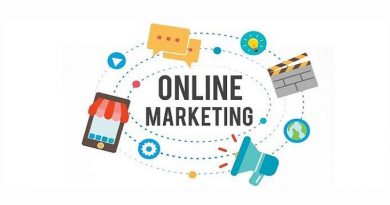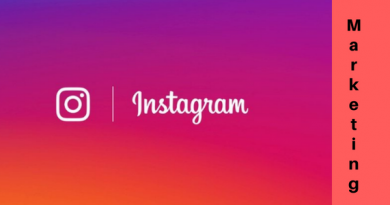Instagram for companies: How to use the business account correctly
Instagram is the new Facebook – at least when it comes to the younger target group. If your product or service mainly appeals to younger people, an Instagram business account can be worthwhile.
Learn how to set up the company profile on Instagram correctly and how to create a suitable strategy. We also have three examples of good start-up Instagram channels for you. What is Instagram anyway?
Instagram, along with Facebook or Twitter, is one of the largest social networks in the world. The focus at Instagram is on pictures and short videos that are provided with hashtags (#), via which pictures can then be found even for non-subscribers.
All pictures and videos are laid out a square on Instagram and can be edited with different filters. On the one hand, this serves a retro trend, because the images and videos are intended to remind you of Polaroid images. On the other hand, Instagram focuses on motivating images, which are given a more charming touch by the filters.
In 2012, Instagram was bought by Facebook. Since 2016, the app has also offered the option of creating a business profile, where you can get detailed statistics and start campaigns compared to a private account. Both the private account and the business account are fundamentally free of charge, provided that no ads are displayed.
When is an Instagram account worthwhile for founders?
Instagram serves a rather younger target group, which is why a business account is a great opportunity, especially if you address young people with your product or service. Stories are continually supplemented by short video messages over a day, which is automatically deleted after 24 hours.
Users must, therefore, be quick to read the However, pay attention to the factors time and goals: Because (personnel) costs or costs for a PR agency specializing in Instagram and the benefits of social media, activities should be in a good relationship.
How Can I set upon an Instagram business profile?
If you want to set up an Instagram business account, first download Instagram from your app store.
You can then complete your Instagram profile, which includes:
- A meaningful profile picture with recognition value
- A brief description of your company
- Link to your imprint

If your profile is available, you can switch to the company profile. To do this, click on your settings and select “Convert to business profile”. Then link your channel to your Facebook page.
With an Instagram business account, you benefit in particular from better statistics and extensive contact options. It takes about 15 minutes to set up Instagram and create a business account.
Since Instagram only relies on pictures and videos, you should set up a business account especially if you can inspire with creative and motivating pictures. They not only arouse stronger emotions, which are better conveyed by pictures than texts.
Content is king. It’s only the quality content that may help you to start you Instagram journey with good statistics. Your account should have a good followers count. The viewers of your profile will get impressed by seeing that you have enough followers. To get followers in less time, you can buy real Instagram Followers from any trusted service provider.
You also benefit from the comparatively high level of interaction that Instagram offers compared to other social networks.Create the right strategy for your Instagram business account
Step 1: define goals
You shouldn’t (only) set up an Instagram business account to be part of it. Your channel will only be successful if you follow a well-thought-out strategy. So ask yourself beforehand:
Do I have the human resources to fill my account regularly?
Do I have interesting and appealing pictures and / or videos that I can use to win new fans?
The first step, if you really want to get started on Instagram, is the goal. Do you want to increase the awareness of your brand, improve your image or promote a certain product?
When defining the goal, also note that Instagram lives from emotions. Classic advertisements in the form of posts do not work for free here – put people and experiences in the foreground with your pictures or videos on Instagram.
Step 2: know your competitors
After you have defined the goals, you should analyze your environment: Which competitors are represented on Instagram with a business account? How are the channels filled there? What’s doing well and what isn’t? Which hashtags are used? Let yourself be inspired by the competition, but don’t lose sight of your own goals.
The next step is the hashtags analysis. Research in advance important hashtags that work for your industry on Instagram. Good hashtags can increase your reach enormously. But be careful: use hashtags deliberately and don’t flood your subscribers with them – less is sometimes more on Instagram too.

Step 3: target group and content
You should know your target group well: how old is it? What are your preferences? At what time is it particularly active? Accordingly, plan contributions and topics that might interest your target group in advance.Hashtag campaigns, competitions or stories can also inspire your subscribers.
How about, for example, letting your fans take a look behind the scenes of your production in an Instagram story? Or let your subscribers post pictures under a hashtag – and the best picture wins your new product?
Step 4: now it starts
Getting started right doesn’t just mean posting your own content. Be interactive on Instagram, i.e. like other pictures and channels that can fit your profile and write comments if you like pictures. However, make sure that
Your interaction always fits your company.
Don’t act too promotionally.
You find the right amount of communication.
Step 5: use of statistics
If you use the Instagram business account, you can see the following things in the statistics:
“Likes
Comments
Saved posts
Impressions (how many people viewed your post – possibly more than once)
Reach (how many people your post was shown to – not multiple)
interactions
Use these evaluations in the Instagram business account to learn for future posts: Which pictures went particularly well? What was there to see? Which hashtags were used? What did not go so well – what could you do differently next time?


